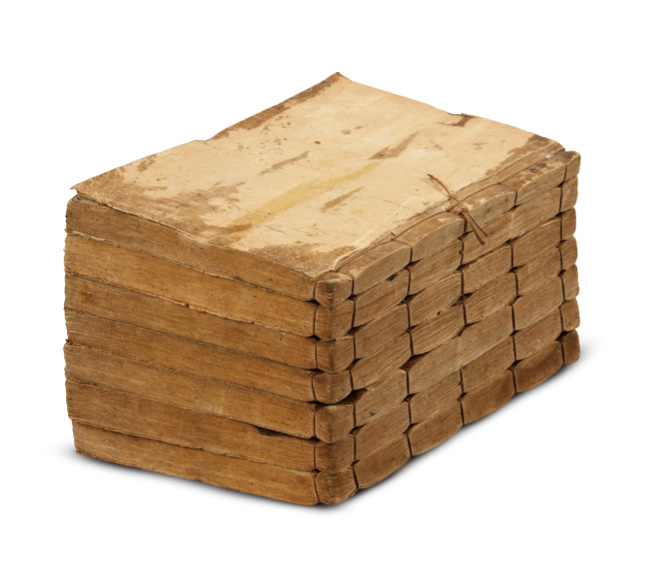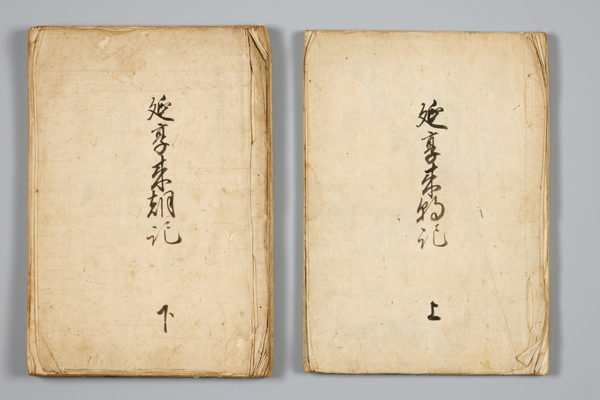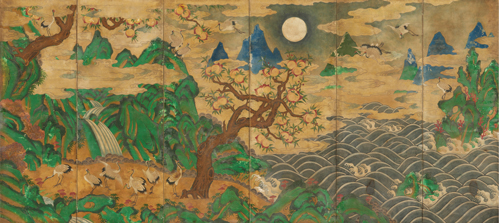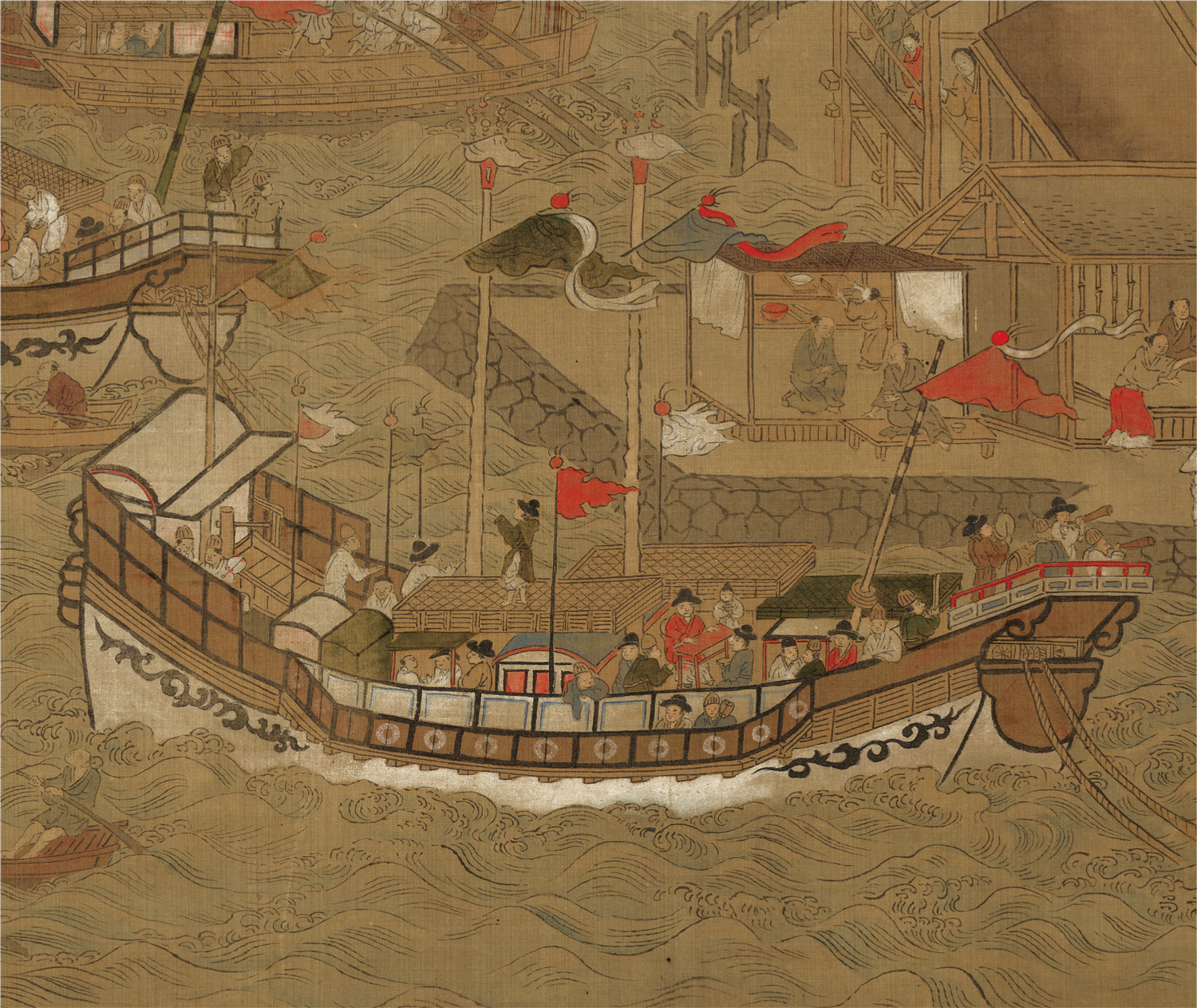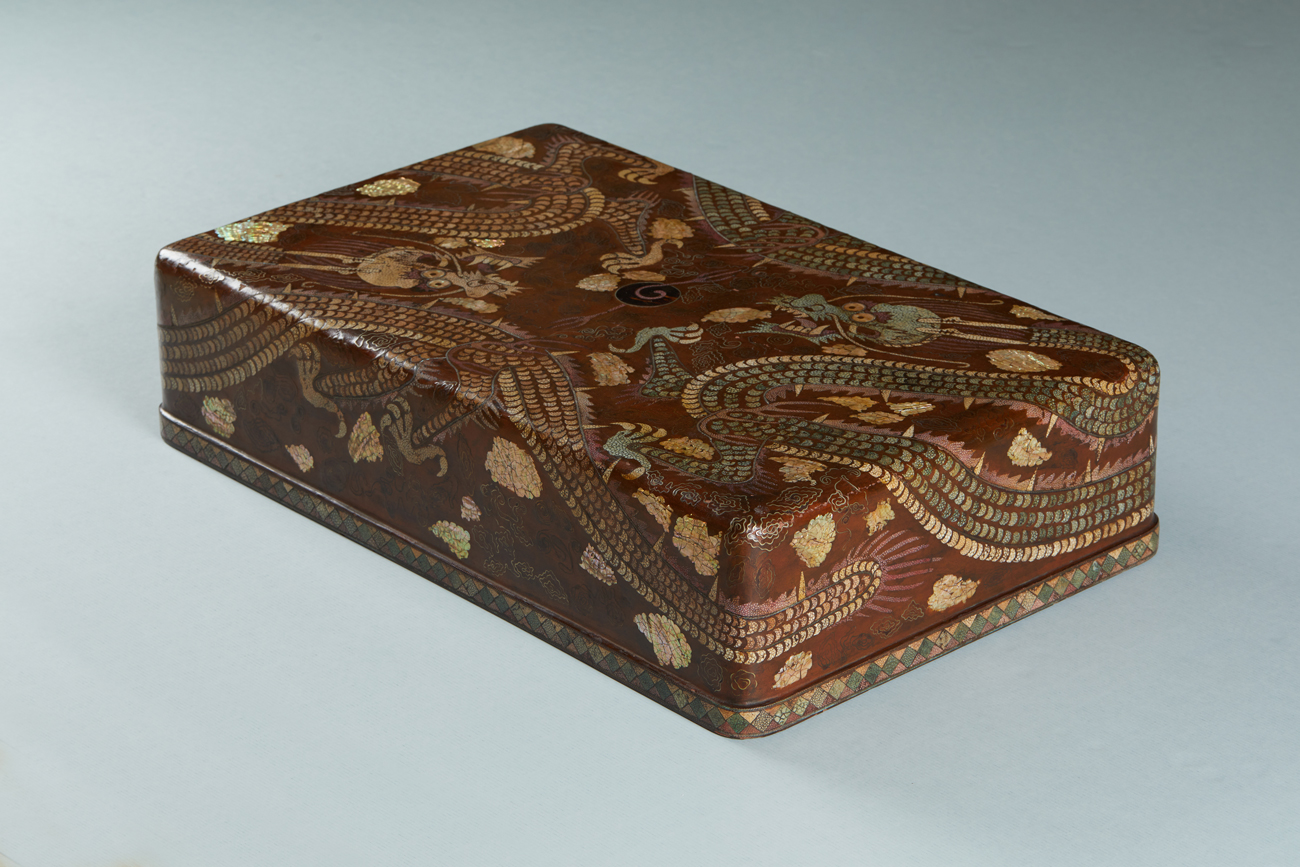-
Record of Joseon Envoys to Japan by Shin Yu-han
The Jesulgwan(Filing Officer) of the diplomatic mission to Japan was responsible for keeping records and documents related with the mission and serving as an officiant at rites and prayers appealing to the guardian deities for a bountiful harvest and safety at sea. It was a unique position for the Joseon dynasty to run only for the missions to Japan, and not those to China, and the government of Joseon tried to pick the most talented man of letters for the position, particularlysomeone who could communicate with Japanese officers in a constructive manner. Shin Yu-han(1681-1752) served as the Filing Officer of the diplomatic mission that visited Japan from the 4th month of 1719 to the first month of the following year. Shin recorded his experiences as an envoy to Japan in this manuscript in the form of a diary. In the book, he wrote not only about the geography, customs and systems of Japan but also about the “brush talks”(pildam)he had with Japanese Buddhist priests and the prefaces he had written for other people’s collected literary works. The “silent conversations” he included in the book were largely questions and answers about Joseon.
Republic of Korea / Joseon(18th century) / paper
-
The Member List of Joseon Envoys to Japan
This is a list of the members of the diplomatic mission(i.e. the 11th Joseon Tongsinsa) dispatched to Japan in 1763. The list, which was drawn up in Japan in the Edo period, contains the names of all 477 members of the Joseon mission, including the leadership consisting of Jo Eom(High Envoy), Yin In-bae(Deputy Envoy), Kim Sang-ik(Assistant Envoy) and Nam Ok(Filing Officer), together with their positions and responsibilities. The 11th Joseon Tongsinsa is now highly regarded for its contribution to the “cultural diplomacy” linking Joseon and Japan. Jo Eom, the head of the mission, is nowadays better remembered as the person who brought sweet potato seeds back to Korea from this mission and planted them in Yeongdo Island in Busan.
Japan / 1764 / Paper
-
Collected Works of Yun Seon-do
The Collected Works of Yun Seon-do is an anthology of verse authored by Yun Seon-do, a renowned man of letters who flourished during the reign of King Injo. The book was published in 1791 by Seo Yu-rin, then governor of Jeolla-do, at the king’s behest, and was revised in 1798 by Seo Jeong-su, who also served as the governor of Jeolla-do. The book consists of six volumes and contains literary writings in a variety of genres including poetry, memorials, calligraphy, eulogies, reports, and other miscellaneous writings. The book provides valuable information about life in the Joseon period, including its politics, philosophies related to humanity and nature, and literature on the “idyllic” life. This particular work of Korean sijo poems written under the title, Four Seasons of a Fisherman, by Yun Seon-do deals with the idyllic life the poet enjoyed on Bogildo Island.
Republic of Korea / Joseon(1838) / paper
-
Collection of Old Novels and Essays
As its title, Gongok(literally meaning “Elaborate Jade Carving”), suggests, this book is largely concerned with the cultivation of the mind and the promotion of a virtuous life. The book, which has neither a preface nor a colophon, contains a collection of writings in a variety of genres including the novel and the memoir.There is no common theme or subject linking all the writings collected in the book, suggesting that these were the manuscripts of texts in which the compiler had a personal interest. Among the writings collected in the book, “Records of Ocean Drifters including That of Kim Ryeo-hwi”, is held in particularly high regard as it cannot be found in printed form anywhere else. The travelogue of Kim Ryeo-hwi is related with a group of thirty-two men, including Kim, who left their hometown in Haenam when their crops failed and went to live as beggars on Jeju Island. However, on their return home, their ship ran into a heavy storm and they ended up drifting across the ocean for ten days, during which four of the men died of hunger and thirst, before reaching the Ryukyu Islands in October. The twenty-eight survivors were returned home on June 15, 1663, via the Tsushima Islands under the guidance of Japanese envoys.
Republic of Korea / Late Joseon Dynasty / paper
-
The Dutiful Daughter
The title of this book, Simcheongjeon(lit. “The Story of Sim Cheong”), is printed on the cover in Chinese, together with a postscript in Korean revealing that it is a single-volume book telling the story of Sim Cheong, a girl renowned for her filial devotion. The heart of the story, written in Korean centers on Sim Cheong’s great filial piety towards her blind father, Sim Hak-gyu. Sim Cheong sells herself to a group of maritime merchants who need a human sacrifice to soothe the fury of the Dragon King of the Sea at the price of three hundred bushels of rice, which would help her father to recover his vision. After diving deep into the depths of Indangsu, Sim Cheong meets the dragon king, who is greatly moved by her story of filial devotion. He places the girl in a large lotus flower and sends her back to the distant shore. Back on dry land, the arrival of Sim Cheong in the lotus flower is reported to the imperial court, which ultimately results in her marriage to the emperor. Becoming an empress, however, does not stop her from missing and worrying about her father, so she is finally reunited with her father. The extreme joy felt by father and daughter upon being reunited miraculously opens the blind man’s eyes.
Republic of Korea / Joseon(1857) / paper
-
Record of Joseon Envoys to Japan
This document is related with the tenth diplomatic mission(Tongsinsa) of Joseon that was sent to Japan in 1748 to congratulate Tokugawa Ieshige on his inauguration as the ninth shogun. The document is a rare historic material that presents some of the characteristic features of the ceremonial protocols(uigwe) of the Joseon dynasty, and contains information about the mission, including its members and various related events, as well as illustrations of the “road clearing flag” and an equestrian event(masangjae).
japan / 18th century / paper
-
Folding Screen Illustrates Sea, Cranes and Peaches
This Buddhist painting, titled Sea, Crane, and Peaches of Immortality(Haehak Bandodo), depicts a crane flying over undulating sea waves and two large trees growing over blue rocks, with peaches(Bando) hanging beneath them. Mounted on a six-panel folding screen, the painting presents a fantastic view of the peaches of immortality at the Shining Lake(Yoji) ruled by the Queen Mother of the West (Seowangmo). Folding screens mounted with a painting were much favored by Joseon’s royalty and aristocracy, and were widely used to decorate their residences or celebrate auspicious events. The scene depicted in the painting symbolizes eternal life and health.
Republic of Korea / Late Joseon Dynasty / Paper
-
Painting of Joseon Envoys Vessels
This painting depicts the Joseon Envoys Vessels entering a Japanese port, and the surrounding landscape. It shows-on a single canvas-more than 160 people, including members of the Korean diplomatic mission and Japanese people who have gathered at the port to welcome the envoys or observe the rare event, and others who are busy unloading and moving cargoes. Also depicted in the painting are two Joseon Envoys vessels, sails furled and anchors dropped, another ship in the process of lowering its sails, and a number of small Japanese warships(Kobayabune) unloading and transporting cargoes from the missionary ships.
Japan / 18th century / paper
-
Lacquered Box Inlaid with Mother-of-pearl in a Pattern of Twin-dragon Design
This wooden box was probably used to store garments or other valuable items.Its upper face is decorated with twin dragons embellished with tortoise shell ornamentation that extends to the adjacent faces. The dragon’s scales, mane and belly are decorated with fish skin, while the clouds are decorated with a nacre design, and the edges of the lid with fish skin and lacquering. Similarly, the front part of the interior of the box has a navy blue silk lining with a twin dragon design, which might date back to the late nineteenth century. The decorative features of the box’s front face and its sturdy structure suggest that it was owned by a royal or aristocratic household of Joseon.
Republic of Korea / oseon(19th century) / Metal, wood, nacre, tortoiseshell, fish skin


